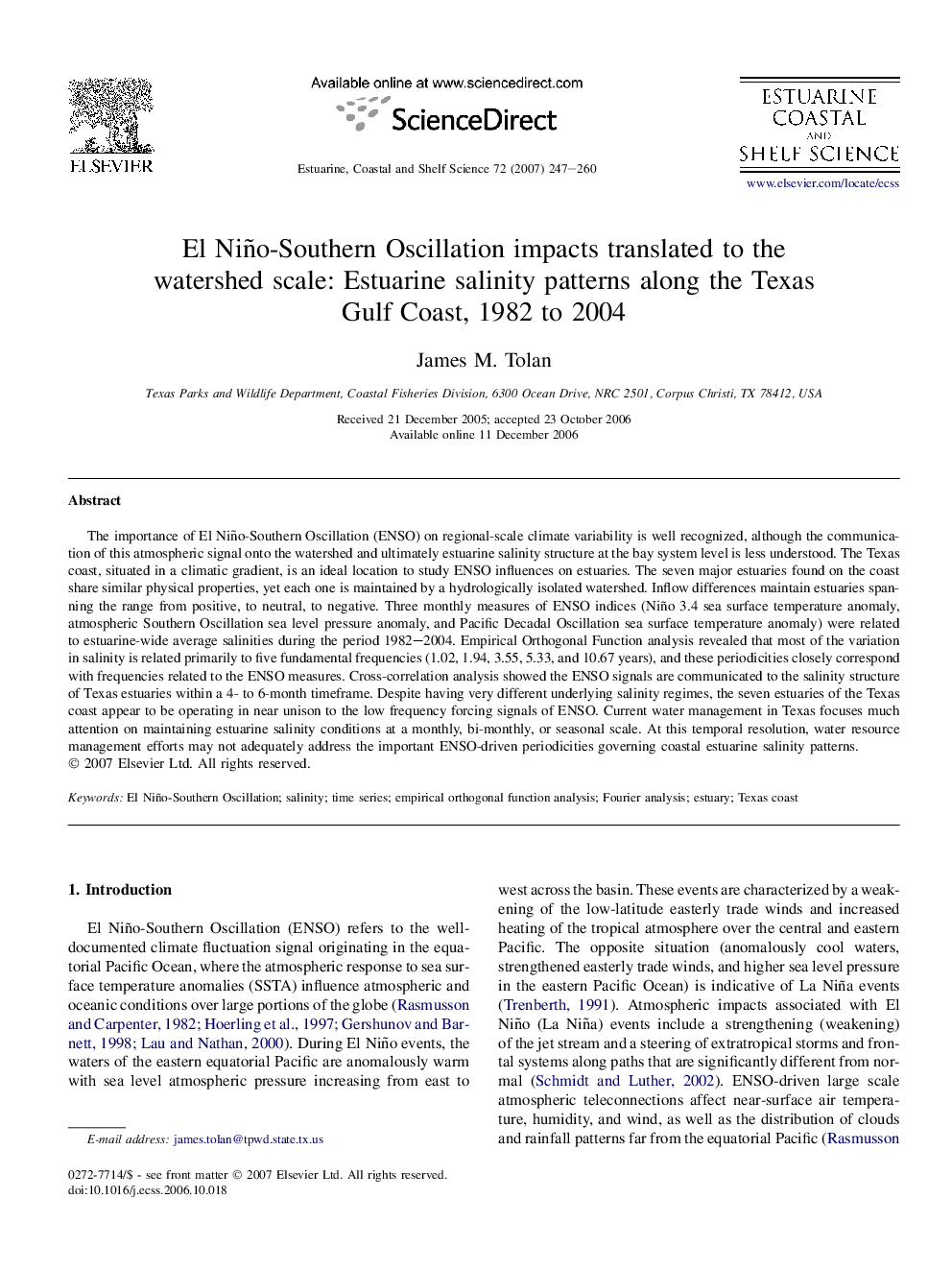| Article ID | Journal | Published Year | Pages | File Type |
|---|---|---|---|---|
| 4542010 | Estuarine, Coastal and Shelf Science | 2007 | 14 Pages |
The importance of El Niño-Southern Oscillation (ENSO) on regional-scale climate variability is well recognized, although the communication of this atmospheric signal onto the watershed and ultimately estuarine salinity structure at the bay system level is less understood. The Texas coast, situated in a climatic gradient, is an ideal location to study ENSO influences on estuaries. The seven major estuaries found on the coast share similar physical properties, yet each one is maintained by a hydrologically isolated watershed. Inflow differences maintain estuaries spanning the range from positive, to neutral, to negative. Three monthly measures of ENSO indices (Niño 3.4 sea surface temperature anomaly, atmospheric Southern Oscillation sea level pressure anomaly, and Pacific Decadal Oscillation sea surface temperature anomaly) were related to estuarine-wide average salinities during the period 1982–2004. Empirical Orthogonal Function analysis revealed that most of the variation in salinity is related primarily to five fundamental frequencies (1.02, 1.94, 3.55, 5.33, and 10.67 years), and these periodicities closely correspond with frequencies related to the ENSO measures. Cross-correlation analysis showed the ENSO signals are communicated to the salinity structure of Texas estuaries within a 4- to 6-month timeframe. Despite having very different underlying salinity regimes, the seven estuaries of the Texas coast appear to be operating in near unison to the low frequency forcing signals of ENSO. Current water management in Texas focuses much attention on maintaining estuarine salinity conditions at a monthly, bi-monthly, or seasonal scale. At this temporal resolution, water resource management efforts may not adequately address the important ENSO-driven periodicities governing coastal estuarine salinity patterns.
